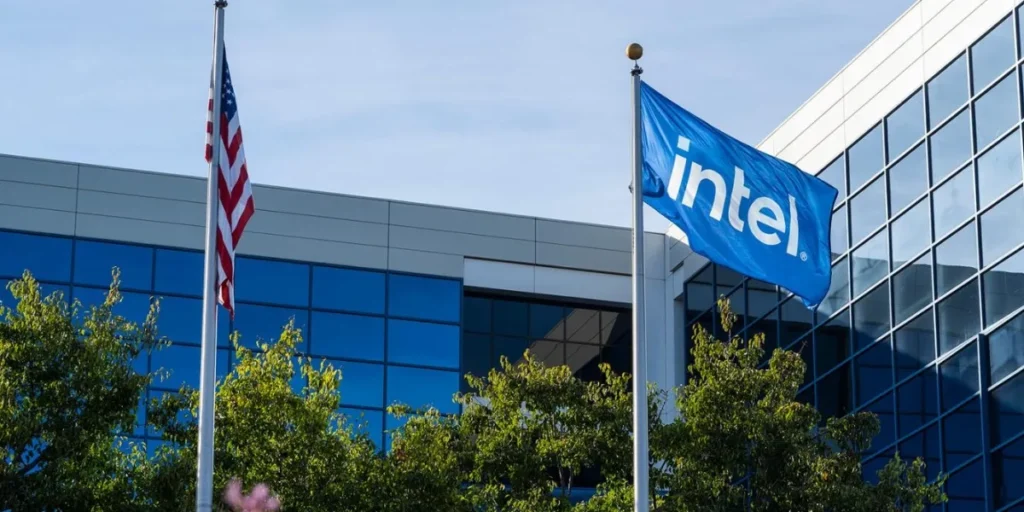
Intel recently announced a major restructuring plan, cutting approximately 15,000 jobs in an effort to reduce spending by $10 billion over the next few years. These Intel job cuts, aimed at streamlining operations and reallocating resources to key growth areas, reflect broader economic pressures and industry trends within the tech sector. As global economic uncertainties continue, the impact of these layoffs on the company, its workforce, and the larger tech ecosystem is coming into sharper focus.
The Intel Job Cuts in Context
Intel’s cost-saving initiative is part of an extensive restructuring strategy intended to help the company adapt to shifting market conditions and remain competitive in a rapidly changing tech landscape. Like other tech giants, Intel is responding to a mix of rising operational costs, changing consumer demands, and increasing competition from both traditional tech firms and innovative startups.
As economic headwinds persist, layoffs and budget cuts are becoming more common in the tech industry, with companies such as Google, Amazon, and Meta also announcing job cuts this year. For Intel, however, the magnitude of these job reductions is significant, impacting around 15% of its workforce and suggesting a substantial shift in its business model. While job cuts are a painful but often necessary step for companies during tough times, Intel’s focus on strategic cost reduction highlights its effort to pivot toward new opportunities in sectors like AI and data centers, which represent potential areas of growth.
Why Intel Is Implementing Job Cuts Now
Intel’s decision to implement job cuts on this scale stems from both internal challenges and broader economic factors. The company has faced increasing pressure to balance its budget and prioritize profitability while investing in research and development for future technologies. Here are some of the main factors influencing this decision:
- Increased Operational Costs
Rising costs across the board have put significant financial pressure on Intel. From supply chain disruptions to inflation and rising energy costs, Intel faces a complex mix of economic pressures that impact profitability. By reducing its workforce, Intel aims to allocate more resources toward essential growth areas, ensuring long-term viability. - Global Economic Uncertainty
Economic uncertainty has been a defining factor in corporate strategies over the past few years, particularly for companies with global reach like Intel. As consumer spending slows and recession fears linger, many large companies are opting to reduce costs and minimize risk. - Focus on AI and High-Growth Markets
With the tech industry increasingly leaning toward advancements in AI and cloud computing, Intel is restructuring to prioritize investments in these high-growth areas. The company recently announced initiatives aimed at strengthening its presence in AI-driven services and enhancing its data center business to capture market share in lucrative segments.
The Broader Trend of Tech Industry Layoffs
Intel’s job cuts are part of a growing trend of layoffs across the technology sector, where many firms have opted to downsize their workforce. In the past two years, companies like Google, Amazon, and Salesforce have trimmed their workforces in response to over-hiring during the COVID-19 pandemic, a period marked by unprecedented demand for digital services. Here’s a look at other companies that have taken similar steps:
- Google: In early 2024, Google laid off more than 1,000 employees to streamline operations and refocus on AI.
- Amazon: The e-commerce giant announced multiple rounds of layoffs in 2024, targeting both corporate and technical roles.
- Salesforce: After significant layoffs in 2023, Salesforce implemented additional workforce reductions in 2024 to address slowing demand.
This trend of corporate downsizing highlights the tech sector’s response to rapidly shifting market conditions. The COVID-19 era surge in hiring has now stabilized, with companies optimizing their staff levels to better align with current business needs. While these layoffs indicate a cautious approach to economic instability, they also raise questions about the long-term impacts on innovation, talent retention, and employee morale within the industry.
Intel’s Strategy Moving Forward
Despite the job cuts, Intel remains focused on strategic growth in emerging tech sectors. The company’s $10 billion cost-cutting goal is part of an overarching plan to streamline operations and direct resources to future-proof investments. Intel’s primary focus areas include:
- Advanced AI Development
Intel is making significant investments in AI technologies, hoping to position itself as a leading force in artificial intelligence and machine learning. With demand for AI solutions on the rise, this pivot could help Intel capture a share of this high-growth market and appeal to businesses seeking AI-powered solutions. - Expansion in Data Center Services
Data centers are a critical component of modern digital infrastructure, and Intel is working to expand its presence in this space. By refining its offerings and building innovative solutions for data storage and processing, Intel aims to attract clients from various sectors, including cloud computing, financial services, and healthcare. - Enhancing Semiconductor Manufacturing
Intel has long been a leader in semiconductor manufacturing, but with increased competition from firms like AMD and NVIDIA, the company is working to fortify its position. Intel plans to invest in upgrading its manufacturing capabilities, particularly in advanced chipmaking technologies, to cater to next-generation computing needs.
Economic and Social Impacts of Intel’s Layoffs
The large-scale Intel job cuts will have a ripple effect on employees, communities, and the U.S. economy as a whole. While these changes may ultimately strengthen Intel’s business model, they present immediate challenges for affected workers and their families. Moreover, these layoffs could impact local economies, especially in regions where Intel has significant operations.
Intel’s workforce reductions could also influence the larger tech labor market. As talented professionals enter the job market, competitors may gain access to a pool of skilled individuals with expertise in advanced computing, engineering, and software development. This redistribution of talent could potentially benefit other companies, especially those looking to bolster their own AI and data center operations.
What This Means for the Future of Tech Jobs
Intel’s job cuts underscore the evolving nature of employment in the tech industry. As companies face both economic challenges and technological advancements, the skills in demand are changing. Positions focused on AI, cybersecurity, and cloud computing are becoming increasingly valuable, while more traditional roles may decline. Intel’s restructuring reflects the industry’s need to adapt to new technologies while responding to a shifting economic landscape.
For the tech workforce, this shift suggests that continuous learning and adaptability are more important than ever. Professionals with expertise in cutting-edge technologies, such as AI, machine learning, and data science, are likely to be in high demand as companies refocus on these areas. As a result, employees who embrace upskilling and adaptability will have a competitive edge in this dynamic job market.
Conclusion: A Necessary Shift or a Sign of Trouble?
The Intel job cuts are a significant step for the company as it seeks to navigate economic pressures while positioning itself for future growth. While challenging for those affected, these layoffs highlight a broader trend in the tech industry as companies streamline operations and prioritize investments in high-growth areas. For Intel, this restructuring is an attempt to reduce costs and remain competitive in a constantly evolving market, but it also raises questions about the sustainability of widespread layoffs across the tech sector.
As Intel moves forward with its ambitious cost-saving goals, the long-term success of this strategy remains to be seen. In the meantime, the tech industry—and the millions of people it employs—will continue to adapt to the realities of a changing economic landscape.


